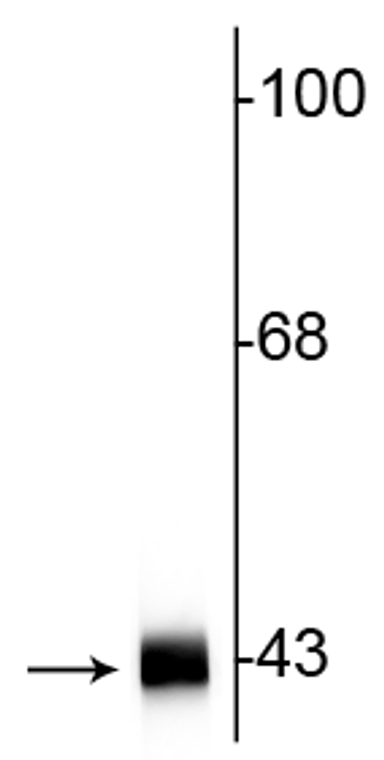| Host: |
Mouse |
| Applications: |
WB/IHC/ICC |
| Reactivity: |
All |
| Note: |
STRICTLY FOR FURTHER SCIENTIFIC RESEARCH USE ONLY (RUO). MUST NOT TO BE USED IN DIAGNOSTIC OR THERAPEUTIC APPLICATIONS. |
| Short Description: |
Mouse monoclonal antibody anti-Actin is suitable for use in Western Blot, Immunohistochemistry and Immunocytochemistry research applications. |
| Clonality: |
Monoclonal |
| Clone ID: |
C4 |
| Conjugation: |
Unconjugated |
| Isotype: |
IgG1 |
| Formulation: |
Ascites fluid + 0.01 % Sodium Azide. |
| Purification: |
Ascites fluid. |
| Dilution Range: |
WB 1:5000IHC 1:500ICC 1:200-1:500IP |
| Storage Instruction: |
Store at-20°C for up to 1 year from the date of receipt, and avoid repeat freeze-thaw cycles. |
| Immunogen: |
Preparation of chicken gizzard actin. |
| Background | Actin is the most abundant protein found in virtually all eukaryotic cells. It is also one of the most highly-conserved proteins, differing by no more than 20% in species as diverse as algae and humans, making it an excellent choice for use as a loading control. It is the monomeric subunit of microfilaments, one of the three major components of the cytoskeleton, and of thin filaments, which are part of the contractile apparatus in muscle cells. Thus, actin participates in many important cellular functions, including muscle contraction, cell motility, cell division and cytokinesis, vesicle and organelle movement, cell signaling, and the establishment and maintenance of cell junctions and cell shape. |
Information sourced from Uniprot.org
12 months for antibodies. 6 months for ELISA Kits. Please see website T&Cs for further guidance








